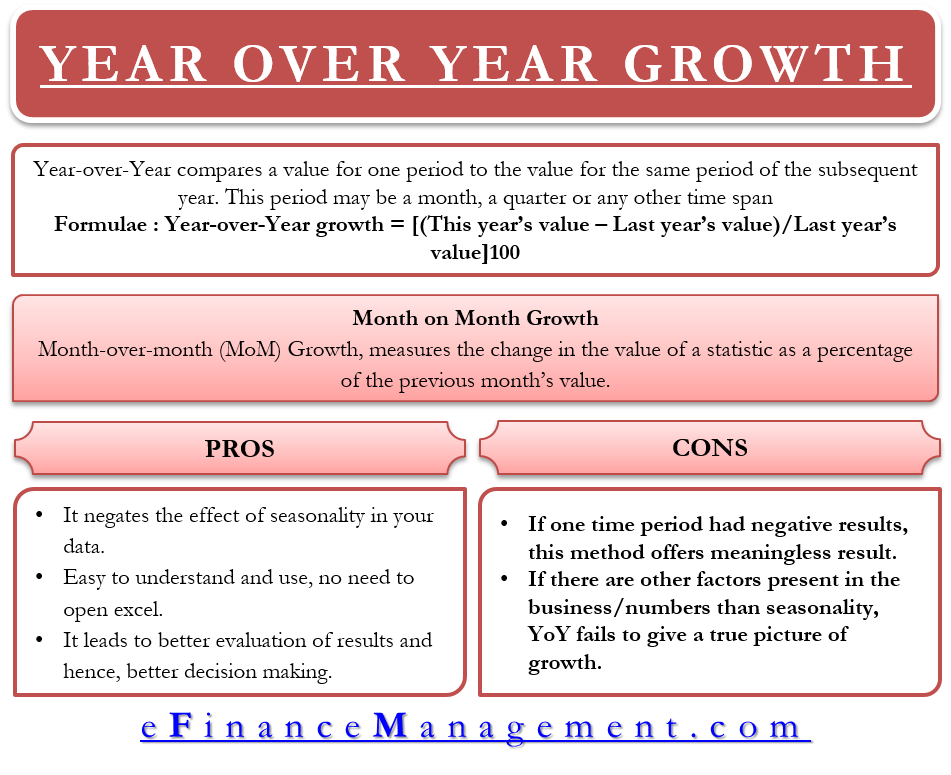Year-over-Year compares a value for one period to the value for the same period the subsequent year. This period may be a month, a quarter, or any other time span based on its appropriateness. Year-over-Year is a method of evaluating two or more measurable events wherein the results of one period are compared to the results in another period on an annualized basis. YOY helps to understand if a firm’s financial health is improving, worsening, or static. E.g., in newspapers, we frequently read that a brand’s profit has improved by some x% for the third quarter, on a YOY basis.
Reasoning Behind Using Year-over-Year
Let’s understand this with the help of an example. Adam, a store manager selling Gift Cards, wants to know if his business has performed better during this Christmas season. To do this, if he compares his sale in the month of December with the sale in the previous month of November, he won’t get the true picture of his store’s performance.
His sale for the Christmas month of December is bound to be greater than that of November. So, Adam’s wife suggested him to compare the sale of gift cards in the month of December the previous year to the gift cards sold in December this year. Doing this, Adam found out his sales figures for December are quite similar for both the years and that he needs to take some measures to grow his business – it’s not growing by itself.
This is what YoY is all about. You compare the current performance of your business to the same time last year. In this way, you may be performing better than your previous months but are still going down because of the factor of seasonality involved in your business.
Also Read: Month-over-Month
Difference between YoY and MoM Growth
Month-over-month (MoM) Growth measures the change in the value of a statistic as a percentage of the previous month’s value. So, if you have started a new business and want to know how many more orders you have received in your second month of operation compared to the first month, you are using month-over-month growth. But, if you want to know how many more ice-creams you have sold this summer season compared to the last summer season, you will use Year-over-Year growth.

Calculating YoY Growth
Calculating YoY growth is simple. As the first step, you deduct last year’s number (say, revenue) from this year’s number. This will give you the total difference. If this difference is positive, your revenue has increased compared to the same period last year. If this number is negative, your revenue has gone down.
Next, you divide the difference by last year’s number. This will give you the YoY growth rate. In the last step, you multiply this growth rate by 100 to get the percentage change. The formula can be expressed as:
Year-over-Year growth = [(This year’s value – Last year’s value)/Last year’s value]100
Example
Consider the sale of umbrellas in the month of July for two different years:
| Year | Revenue |
| July 2018 | $20,000 |
| July 2019 | $32,000 |
To calculate YoY growth in the revenue, take the following steps:
Step 1: Subtract last July’s revenue from this July’s revenue
$32,000 – $20,000 = $12,000
Step 2: Divide the difference by last July’s revenue
$12,000/$20,000 = 0.6
Step 3: Multiply the value by 100 to get change percentage
0.6 * 100 = 60%
You had a 60% increase in revenue compared to last year.
Pros of Using YoY Growth
- It negates the effect of seasonality on your data.
- Easy to understand and use; no need to open excel.
- It leads to better evaluation of results and hence, better decision making.
Cons of Using YoY Growth
- If one time period had negative results, this method offers meaningless results.
- If there are other factors present in the business/numbers than seasonality, YoY fails to give a true picture of growth.

